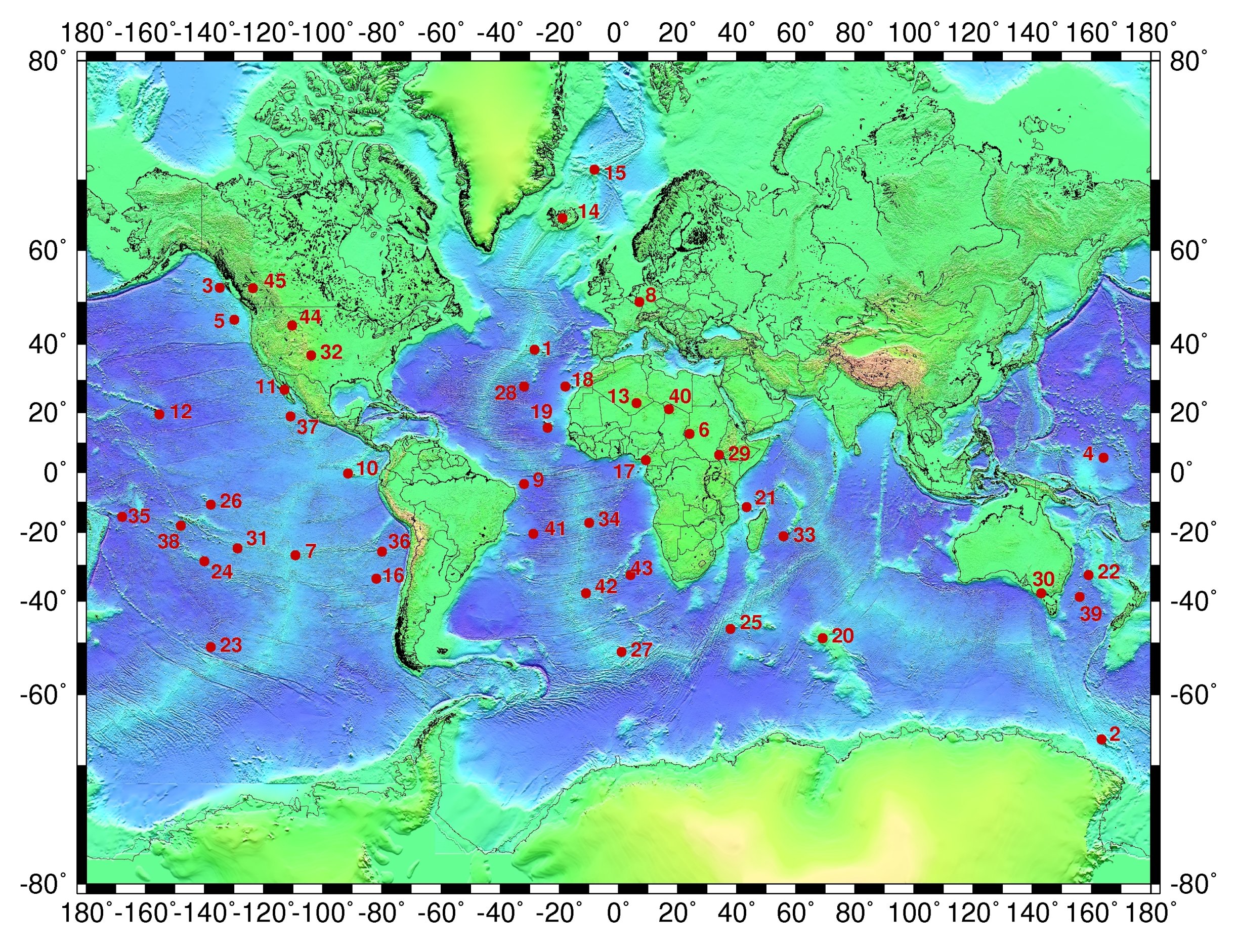|
Vailuluʻu
Vailuluu is a volcanic seamount discovered in 1975. It rises from the sea floor to a depth of and is located between Tau and Rose islands at the eastern end of the Samoa hotspot chain. The basaltic seamount is considered to mark the current location of the Samoa hotspot. The summit of Vailuluu contains a 2 km wide, 400 m deep oval-shaped caldera. Two principal rift zones extend east and west from the summit, parallel to the trend of the Samoan hotspot. A third less prominent rift extends southeast of the summit. Eruptions at Vailuluu were recorded in 1973. An earthquake swarm in 1995 may have been related to an eruption from the seamount. Turbid water above the summit shows evidence of ongoing hydrothermal plume activity. Vailuluu may breach the surface of the ocean and officially become an island if a high rate of eruptions continue. Name and research history The seamount was first discovered in 1975 after seismic activity, including earthquakes, was noted in the ... [...More Info...] [...Related Items...] OR: [Wikipedia] [Google] [Baidu] |
Samoa Hotspot
The Samoa hotspot is a volcanic hotspot located in the south Pacific Ocean. The hotspot model describes a hot upwelling plume of magma through the Earth's crust as an explanation of how volcanic islands are formed. The hotspot idea came from J. Tuzo Wilson in 1963 based on the Hawaiian Islands volcanic chain. In theory, the Samoa hotspot is based on the Pacific Tectonic Plate travelling over a fixed hotspot located deep underneath the Samoan Islands. The Samoa hotspot includes the Samoan Islands (American Samoa and Samoa), and extends to the islands of Uvea or Wallis Island (Wallis and Futuna) and Niulakita (Tuvalu), as well as the submerged Pasco banks and Alexa Bank. As the Pacific Plate moves slowly over the hotspot, thermal activity builds up and is released in magma plume spewing through the Earth's crust, forming each island in a chain. The Samoa islands generally lie in a straight line, east to west, in the same direction of the tectonic plate 'drifting' over the ... [...More Info...] [...Related Items...] OR: [Wikipedia] [Google] [Baidu] |
